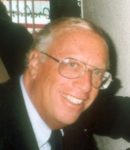By Rabbi Dr. Israel Drazin

PIKESVILLE, Maryland — Before the birth of Israel Baal Shem Tov in 1700, different groups of Jews were called Hasidim, meaning “pious ones. “
For example, in the 1st century BCE, there were Hasidim, men and women who were uncompromising observers of Jewish law. They joined the Maccabean revolt against the Hellenistic Seleucids and were partners in winning the battle to save Judaism, resulting in the Hanukah holiday.
The Hasidim of Ashkenaz were also a Jewish mystical, ascetic movement in the German Rhineland during the 12th and 13th centuries. The movement is known for its strict asceticism and mystical doctrine. It radically reimagined Jewish ethics, holding themselves accountable to din shamayim, a heavenly law, a more stringent law, and the traditional Jewish religious law.
There were also many other Baal Shem Tovs, “Masters of the God Name,” before Israel.
But, Israel Baal Shem Tov (1700-1760) originated modern Hasidim. Since his death, much like the many diverse Christian Protestant groups, Hasidim today is made up of many different groups with similar and dissimilar ideologies.
In his 1972 book Souls on Fire, Portraits and Legends of Hasidic Masters, Elie Wiesel introduces readers to Israel Baal Shem Tov and many of his early followers. He tells us about each man, his teachings, the stories he told, the legends about him, and the ideas he taught. The book is brilliant. Easy, even fascinating to read, and very informative. Even people like me who do not focus on mysticism and live a life of common sense and rational thinking can learn many ideas from these religious leaders.
These leaders are generally called Rebbes, which distinguishes them from non-Hasidic rabbis.
Wiesel tells us what I wrote in his brilliant poetic way:
My father, an enlightened spirit, believed in man.
My grandfather, a fervent Hasid, believed in God.
The one taught me to speak, the other to sing. Both loved stories.
And when I tell mine, I hear their voices.
Whispering from beyond the silenced storm, they are what links the survivor to their memory.
Wiesel devotes 36 of the first of his more than 270 pages to Israel Baal Shem Tov and follows it with his followers’ fascinating, eye-opening history, ideas, and stories.
There are more than 36 ideas and stories on these pages. Here are a few examples.
He warned his disciples “to be suspicious of anyone claiming to have all the answers. ‘You want to know if a particular Rebbe is genuine? Go ask his advice. Ask him if he knows how to chase impure thoughts from your mind; if he says yes, you’ll know he is fake.’ He told them that pride derived from knowledge is worse than ignorance and that to seek is better than to find. The greatness of man, he taught them, lies in his capacity for humility… And also that man requires little to elevate and fulfill himself, as long as that is what he longs for, long for with all his heart. He explained to them that abstract erudition is not the sole vessel of truth or the sole path leading to sainthood.”
On the day he died, two clocks in his house stopped working, but the hearts of his disciples still beat with joy in many countries today.
*
Rabbi Dr. Israel Drazin is a retired brigadier general in the U.S. Army Chaplain Corps and the author of more than 50 books.